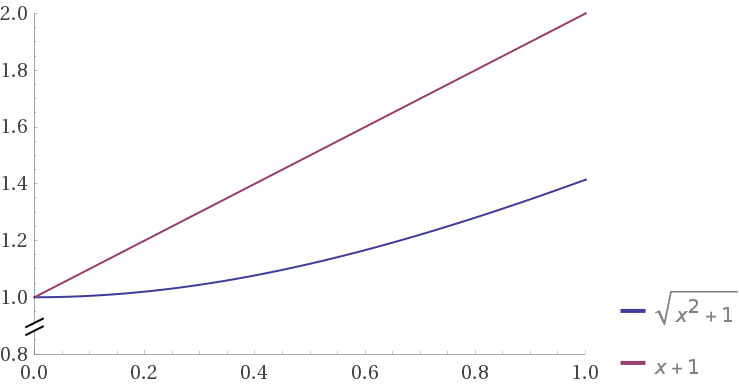Reason behind using Manhattan distance
Suppose there are 3 data points:
1 reference data point:
[0, 0, 0, 0, 0, 0, 0, 0, 0, 0, 0, 0, 0, 0, 0]
And 2 data points in the database:
[1, 1, 1, 1, 1, 1, 1, 1, 1, 1, 1, 1, 1, 1, 1] (Euclidean distance = 3.87, Squared Euclidean distance = 15, Manhattan distance = 15)
[0, 0, 0, 0, 0, 0, 0, 0, 0, 0, 0, 0, 0, 0, 4] (Euclidean distance = 4, Squared Euclidean distance = 16, Manhattan distance = 4)
If noise changes a single 0 into a 4, it will affect Euclidean distance 4x times higher than Manhattan distance. Euclidean distance will pick the first, Manhattan distance will pick the second.
Shouldn´t you be adding that +1 to the x value before squaring?
Euclidean distance = sqrt( (x+1)^2 )
Manhattan distance = | x+1 |
my case is noise in another dimension ;)
however if noise is added to the main dimension,
it will be
sqrt((1 + x)^2 + 1)
vs
|1 + x | + 1
and if we put two curves together (shifted so that tey intersects on x=0)
http://robowiki.net/w/images/5/5a/C3BD3E15-EEB6-4F63-826F-7C1F5E54A78E.gif
euclidean looks terrible with large noise in one dimension, and manhattan looks robust.
